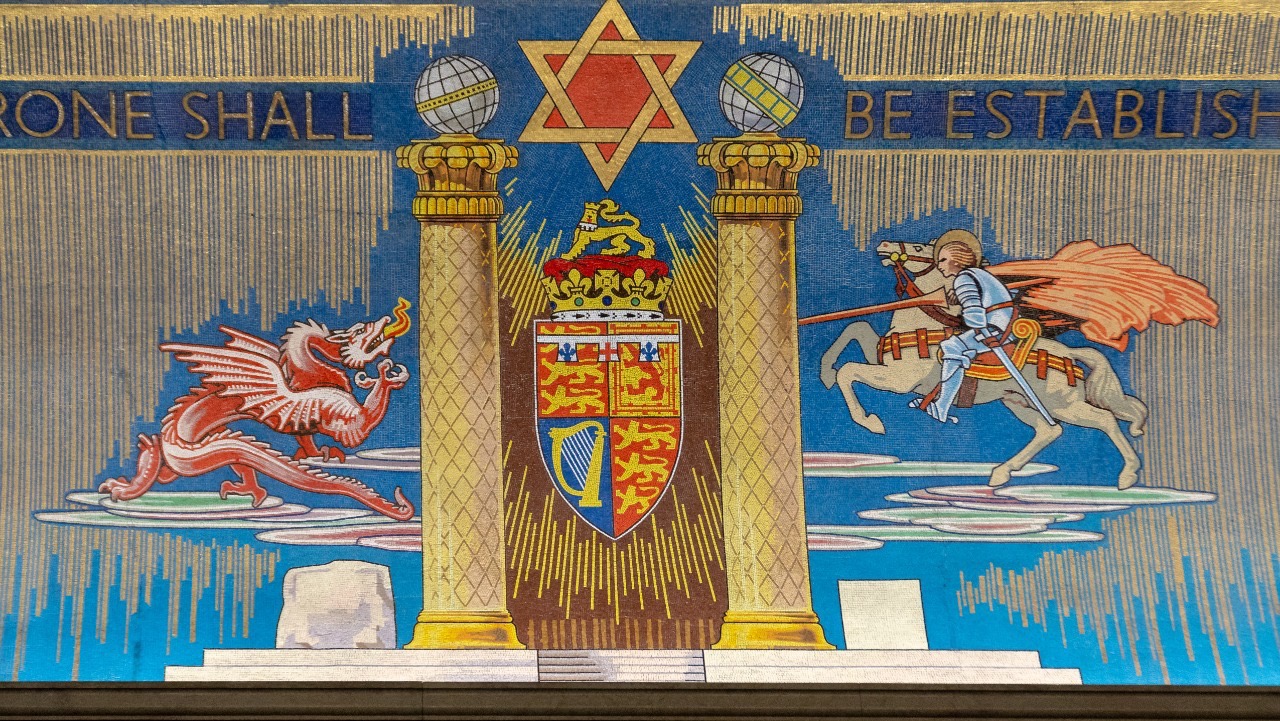The legend of Saint George and the Dragon describes the saint taming and slaying a dragon that terrorised local communities. The story was known in Roman times but has its origins in Greek mythology.
We celebrate St. George's Day on April 23 — the anniversary of his death in 303 AD. The patron saint of England has captivated British imaginations since the Crusades and the Hundred Years' War.
The story of St. George is featured in tesserae mosaic tiles on the ceiling of Freemasons' Hall at
We would like to give one final nod to our very own St. George's Lodge. They meet at Wolverton Masonic centre, and were first consecrated on 22nd April 1936 at the Science and Arts Institute in Wolverton.
Freemasonry has an amazing history that spans over 300 years and is looking forward to the next 300 years.
If you would like to be part of a global community that has its roots firmly in the ground in Buckinghamshire, please join us by following this link: https://buckspgl.org/join
After filling in the short form, our Membership Team will be in touch.
We celebrate St. George's Day on April 23 — the anniversary of his death in 303 AD. The patron saint of England has captivated British imaginations since the Crusades and the Hundred Years' War.
The story of St. George is featured in tesserae mosaic tiles on the ceiling of Freemasons' Hall at
We would like to give one final nod to our very own St. George's Lodge. They meet at Wolverton Masonic centre, and were first consecrated on 22nd April 1936 at the Science and Arts Institute in Wolverton.
Freemasonry has an amazing history that spans over 300 years and is looking forward to the next 300 years.
If you would like to be part of a global community that has its roots firmly in the ground in Buckinghamshire, please join us by following this link: https://buckspgl.org/join
After filling in the short form, our Membership Team will be in touch.





















